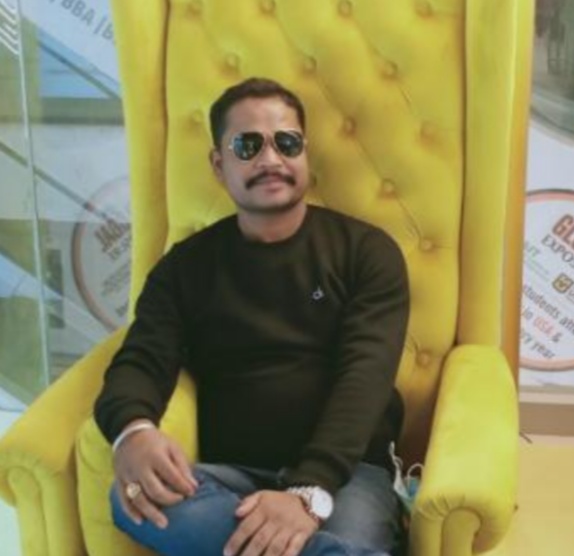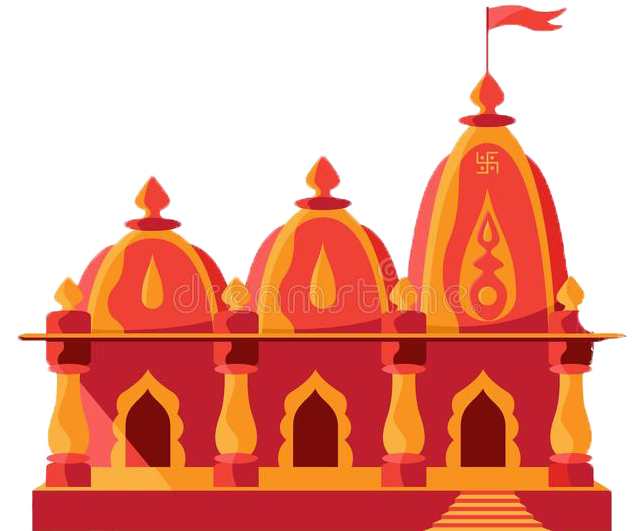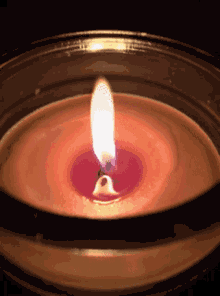This Temple Website sponsored by Mr. Anoop Singh, HSFC, Dwarka, New Delhi-110075.
Phone Numbers- 70117104088, 9136362391

Introduction and History in Brief
Ratu Boko (Javanese: Ratu Boko) or Ratu Boko Palace is an archaeological site in Java. Ratu Boko is located on a plateau, about three kilometres south of Prambanan temple complex in Yogyakarta, Indonesia. The original name of this site is still unclear, however the local inhabitants named this site after King Boko, the legendary king mentioned in Roro Jonggrang folklore. In Javanese, Ratu Boko means “Stork King ”.
King Boko is a legendary character known from popular folklore of Loro Jonggrang. This folklore connects the Ratu Boko Palace, the Durga statue in Prambanan temple (which is identified by local folklore as Loro Jonggrang), and the origin of the Sewu temple complex nearby. Prince Bandung Bondowoso loved Princess Loro Jonggrang, the daughter of King Boko, but she rejected his proposal of marriage because Bandung Bondowoso had killed King Boko and ruled her kingdom. Bandung Bondowoso insisted on the union, and finally Loro Jonggrang was forced to agree for a union in marriage, but she posed one condition: Bandung must build her a thousand temples in one night. He entered into meditation and conjured up a multitude of spirits (genies or demons) from the earth. They succeeded in building 999 temples. Loro Jonggrang then woke her palace maids and ordered them to begin pounding rice. This awoke the roosters, which began to crow. The genies, hearing the sound of morning, believed the sun was about to rise and so disappeared back into the ground. Thus the prince was fooled, in revenge he cursed the princess and turned her into a stone statue. According to the traditions, she is the image of Durga in the north cell of the Shiva temple at Prambanan, which is still known as Loro Jonggrang (“Slender Maiden”).
According to writer HJ. In the 17th century there were many European travelers to Java, who mentioned that there existed an archeological site which related to certain King Boko. In 1790, a Dutch researcher, Van Boeckholtz was the first to discover the archaeological ruins on top of Ratu Boko Hill. The hill itself is the northwestern branch of a larger Sewu mountain system, located on the southern part of Central and East Java spanned between Yogyakarta to Tulungagung. The publication of the discovery attracted scientists such as Mackenzie, Junghun and Brumun to conduct research and exploration on the site in the year 1814. In the early 20th century, the Ratu Boko site was thoroughly studied by researcher FDK Bosch, who published his findings in a report entitled “Keraton Van Ratoe Boko”. From this report concluded that the ruins was the remnant of a keraton (palace). During these researches, Mackenzie also found a statue of a gold-headed man and woman embracing each other. A stone pillar with ornaments of zoomorphic figures among which are elephants, horses, and others, also found among the ruins.
Abhayagiri Vihara inscription dated 792 CE is one of the few written pieces of evidence discovered in Ratu Boko site. The inscription mentioned Tejahpurnapane Panamkarana or Rakai Panangkaran (746-784 M), and also mentioned a vihara located on top of the hill called Abhyagiri Wihara which means “a vihara on top of the hill that free from danger”. From this inscription it was concluded, that King Panangkaran in a later period of his reign wished for a spiritual refuge and created a reclusion of Buddhist hermitage named Abhayagiri Wihara in 792.[ Rakai Panangkaran was a pious follower of Mahayana Buddhist, a Dhyani Buddha statue was discovered on the site, which confirmed its initial Buddhist nature. Nevertheless, some Hindu elements are also found at the site, such as the discovery of statues of Hindu deities: Durga, Ganesha and Yoni.
It seems that the compound was later converted to a hilltop fortress by a local landlord named Rakai Walaing Pu Kumbayoni. According to the Shivagrha inscription issued by Rakai Kayuwangi on 12 November 856, the place was used as a defensive fort, consisting of hundreds of stacked stones. The hilltop fortress was used as a fort during a power struggle in later days of Mataram Kingdom.
The Ratu Boko complex consists of gopura (gates), paseban, pools, pendopo, pringgitan, kaputren (women’s quarter), and meditation caves.
The site covers 16 hectares in two hamlets (Dawung and Sambireja) of the village of Bokoharjo and Prambanan, Sleman Regency. In striking contrast to other Classic-period sites in Central Java and Yogyakarta, which are remains of temples, Ratu Boko displays attributes of an occupation or settlement site, although its precise function is unknown. Probably the site was a palace complex which belonged to the kings of Sailendra or Mataram Kingdom that also built temples scattered across the Prambanan Plain. The argument was based on the fact that this complex was not a temple nor building with religious nature, but a fortified palace instead which evidence of a remnant of fortified walls and the dry moat of defensive structures.The remains of settlements also founds in Ratu Boko vicinity. This site is located 196 m above the sea level, on the highest point in the site, there is a small pavilion from which one will be able to see a panoramic view of Prambanan temple with Mount Merapi as the background.
Ratu Boko stands 196 meters above sea level and covers an area of 250.000 square meters. It is divided into four parts, the central, the west, the southeast and the east. The central section of the compound consists of the main gates, a crematorium temple, a pool, a stone pedestal and the paseban (or audience hall). The southeast part covers the pendopo (attached open pavilion), balai-balai (public hall or building), three miniature temples, a pool and a walled compound popularly named by locals as kaputren (women’s quarter).
At Ratu Boko, traces of probable secular structures have been found, which were erected on a plateau divided into terraces, separated from each other by stone walls and stone-faced ramparts (talud). The site was reached by a steep path up the northwest slope of the plateau, in the direction of Prambanan. The structural remains in the terrace at Ratu Boko site consist of places with folk names connected with palaces such as paseban (reception pavilion), pendopo (audience hall) and kaputren (women’s quarter). A pool complex lies on a terrace adjoining the east side of the pendopo. A group of artificial caves, probably for meditation, lies to the north, isolated from the rest of the site.
Despite the large quantity and variety of remains found there, the exact functions of Ratu Boko site is still unknown. Some believe it was the former palace of ancient Mataram Kingdom; other scholars interpret this site as monastery. While third group holds that it was a place for rest and recreation. Inscriptions shows that the site was occupied at least during the 8th and 9th centuries. Five inscriptions in pre-Nagari script and Sanskrit describe the construction of a shrine for Avalokitesvara. One inscriptions refers to the constructions of a Buddhist monastery modelled after Abhayagiri Vihara (means a monastery on a peaceful hill) in Sri Lanka, where a group of ascetic forest dwelling monks resided. Three dated inscriptions in Old Javanese and poetic Sanskrit recount the erection of two lingga, and bear the date of 778 Saka or 856 AD. Another undated inscription mentions the erection of lingga named Hara at the order of King Kalasobhawa.
Temple Photos
Click HERE to see more temple photos
Videos from YouTube
Presiding Deity
Lord Gautam Buddha❤️🙏
Timing
Monday to Sunday – Open timing MORNING 8am–8:00pm.
The winter season is perfect to visit as it is so hot in summers in Central java which can cause Illness,difficulties.
Aarti Timing
Details awaited.
Basic Facilities
Drinking Water, CCTV Security, , Shoe Store, Wash Rooms.
Activities
Details awaited.
Festivals
Buddha Purnima , Ullambana. Losar , Magha Puja Day , Asalha Puja Day , Uposatha ,Rumtek Chaam , Hemis Festival , Pavarana Day ,Lumbini Festival.
Famous Temples Nearby
- Lumbung. Buddhist-style, consisting of one main temple surrounded by 16 smaller ones.
- Bubrah. Buddhist temple, rebuilt between 2011 and 2017.
- Sewu. Buddhist temple complex, older than Roro Jonggrang. A main sanctuary surrounded by many smaller temples. Well preserved guardian statues, replicas of which stand in the central courtyard at the Jogja Kraton.
- Candi Morangan. Hindu temple complex buried several meters under volcanic ashes, located northwest from Prambanan.
- Candi Plaosan. Buddhist, probably 9th century. Thought to have been built by a Hindu king for his Buddhist queen. Two main temples with reliefs of Boddhisatva and Tara. Also rows of slender stupas.
- South of the Lara Jongrang complex
- Ratu Boko. Complex of fortified gates, bathing pools, and elevated walled stone enclosure, all located on top of the hill.
- Sajiwan. Buddhist temple decorated with reliefs concerning education. The base and staircase are decorated with animal fables.
- Banyunibo. A Buddhist temple with unique design of roof.
- Barong. A Hindu temple complex with large stepped stone courtyard. Located on the slope of the hill.
- Ijo. A cluster of Hindu temple located near the top of Ijo hill. The main temple houses a large lingam and yoni.
- Arca Bugisan. Seven Buddha and bodhisattva statues, some collapsed, representing different poses and expressions.
Near by Shops & Markets
👉Click HERE to look upon Markets and Shops near the Temple.
👉Famous for Shopping in Yogyakarta & Central Java
👉Famous for Shopping Handicrafts and Clothes in Central Java
Nearby Dharamshalas
Details awaited.
Hotels near Temple
👉Click HERE to look upon hotels nearby near Temple
Restaurants near Temple
👉Click HERE to look upon more restaurants near Temple.
Nearby Hospitals
RSIY PDHI Hospital
Panti Rini Hospital
RS. Bhayangkara Jogja
👉 Click HERE to look upon Hospitals nearby
Concerned Police Stations
Jl. Sepat No.1, Tegalsari, Kec. Tegal Bar., Kota Tegal, Jawa Tengah 52111, IndonesiaPhone: +62 283 351513
https://goo.gl/maps/roH8EyxPrDKXb3SDA
Managment Commity
Details awaited.
Miscellaneous information
Details to be taken.
Legal information
The temple is situated on legal site taking care by Govt. and Mandir Community, there is no legal obligation on Temple Property or Temple Schedule, Criteria,Rules etc..
Facilities to hold Functions
Details to be taken
Library
Details to be taken
Akharas
Details to be taken
Mehants, Pujaris, Archakas and Sewayats
Name:
Photo:
Phone Number:
Further Details:
Details to be updated.
Gau Sewa, Birds and otheranimals Sewa
Initiattives like Pashu Sewa, Pakshi Sewa, Langar Sewa, Vedic Pathshalas etc Plannings in process.
Langar Sewa
Details awaited.
Gurukul/Vedic Pathshalas
Details awaited.
Mitra Mandal Link for Advice/Guidance*
This is a group of devotees of Govardhan Mandir who regularly go for darshans and Govardhan Parikrama.
Google Forms will be available shortly to become member of this group.
Modes of Travel
By Air
The fastest and the most convenient way to travel to Indonesia from India is by air. You can take a flight either to Soekarno–Hatta International Airport in Jakarta or Ngurah Rai International Airport in Denpasar. There are several airlines from India that offer connecting flights to these destinations. Indonesia is roughly 4483 kilometres (2786 mile) from India and the flight time is around 5 hours. You can book your flight from several major cities in India, such as Mumbai, Delhi, Bengaluru, Amritsar, Chennai, and Cochin, all of which offer you nonstop flights to your destination.
Soekarno–Hatta International Airport in Jakarta is the busiest airport and it is a mere 20 kilometres from the city centre. The airport offers all the amenities that the modern traveller desires – shops, cafes, lounges, ATM, etc. There could a bit of a wait while arriving or departing this airport. Ngurah Rai International Airport in Denpasar can cater to large as well as smaller aircrafts making it your preferred choice if you’re heading to Bali.
There are several airlines that offer direct flights to Indonesia. Air India, All Nippon Airways, Asiana Airlines, Cathay Pacific, China Southern Airlines, China Eastern Airlines and Emirates are some of the international carriers that can fly you to Indonesia. Garuda Indonesia is the national carrier, and you can travel within the country by catching a domestic flight on this airline
Connectivity within the country is excellent and you can easily get yourself a forward flight or alternate mode of transport to wherever your destination in Indonesia is. You can also check out the things to do in Indonesia.
By Sea
If you are feeling a little bit adventurous and also have a lot of time on hand, you can try traveling to Indonesia by sea. The experience of just relaxing aboard a luxurious ship, being lulled by the waves, is unlike any other. Sit back and enjoy the many comforts that the trip offers you.
There are no direct cruises from India and you will first need to head to Singapore. From there, you can hop on board a cruise going to Australia or one doing a circuitous trip around the Southeast Asian countries. You can disembark in Bali where you can continue the rest of your vacation. The cruise from Singapore to Australia usually takes about 6-7 days to reach Bali, with a halt in between at Semarang.
Visitors view about the Temple
The Data mentioned above and links are taken from Google, YouTube, TripAdvisor, Justdial, Wikipedia, Google Maps etc,. which is already in public domain. All such informations are only to facilitate the devotees to have proper darshan and there is no intentions of making any financial benefits out of them.
This website developed and maintained by :
Mc Luhan Madhyam LLP
176, Pocket-2, Sector-19, Dwarka, New Delhi-110075.
Phone Number: 01145118299, 9899802299



